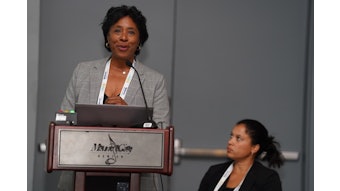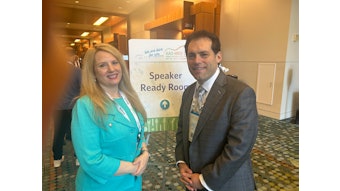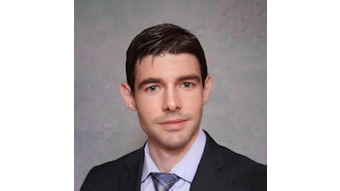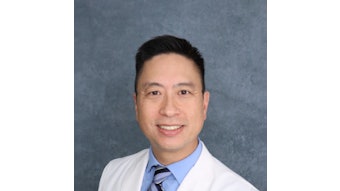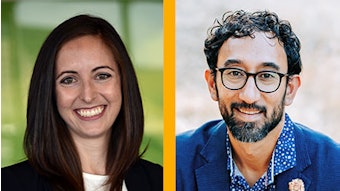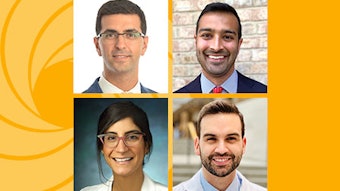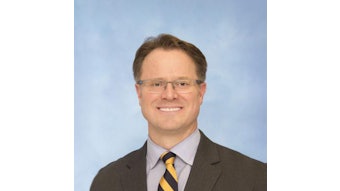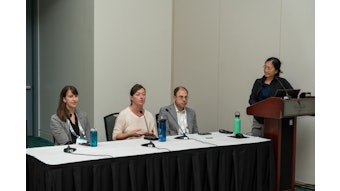How to Bring Quality Improvement to Your Clinical Practice
QI enables our systems to prevent mistakes from resulting in harm to patients.

Quality improvement (QI) is not an abstract notion out of residency, nor is it a mystery. Assessing quality in a clinical practice and taking concrete steps to improve it is as much a part of otolaryngology as keeping up with current research and adjusting clinical practice as the evidence evolves.
“We can all read a research paper and digest it, but we don’t all have that kind of background in quality improvement,” said Karthik Balakrishnan, MD, MPH, Susan B. Ford Surgeon-in-Chief and Medical Director of Surgical Performance Improvement at Lucile Packard Children’s Hospital and Associate Professor of Otolaryngology – Head and Neck Surgery at Stanford University School of Medicine in California. “That can make QI off-putting, if not intimidating. The reality is that people don’t realize they have been doing QI all the time in their practices. If you come across a problem, you’re likely going to do something to address that problem, and not just a one-time solution, but a solution that prevents the problem from coming up in the future, a sustainable solution. That’s what improvement work is, creating sustainable solutions. People just don’t make the connection between what they do every day with QI.”
Dr. Balakrishnan is part of a panel presenting “A Primer for Assessing Your Clinical Practice using Quality Improvement” on Tuesday. Until the day comes when we all work in perfect situations and environments, clinicians can expect to encounter problems and obstacles with the systems and processes they work in. QI is a proven, practical set of tools to address problems in ways that create sustainable solutions.
QI is not a novel topic. The airline industry has been using QI for decades, an important reason there are far more injuries and fatalities from medical and surgical errors than from airplane crashes, noted Nausheen Jamal, MD, Associate Professor and Chair of Otolaryngology–Head and Neck Surgery and Associate Dean of GME & DIO, University of Texas Rio Grande Valley School of Medicine in Edinburg, Texas.
“There’s a tradition in our culture and in surgical culture in general that when something happens, it’s the surgeon’s fault,” Dr. Jamal said. “We are taught in residency that if anything happens to the patient, you, the surgeon, are captain of the show. And while it is important to take personal responsibility for things that happen to our patients under our care, that tradition also puts undue pressure on us as human beings. The more effective approach is to improve our systems so that when we make mistakes, because we’re all human, our systems prevent those mistakes from resulting in harm to patients.”
QI is a relatively recent addition to residency training, but otolaryngologists and other surgeons have been practicing QI for decades in the guise of morbidity and mortality conferences, added Christina J. Yang, MD, Associate Professor of Otorhinolaryngology-Head and Neck Surgery, Albert Einstein College of Medicine and Director, Pediatric Dysphagia and Associate Director of Pediatric Otolaryngology Quality Assurance, Montefiore Medical Center / Children's Hospital at Montefiore in Bronx, New York.
“Engagement is there, but there is no universal QI curriculum for residents or for otolaryngologists in general,” she said. “We focus on material available from the Institute for Healthcare Improvement Open School (ihi.org) for people who are feeling overwhelmed for how to get started with QI. What often occurs is that somebody inclined to be a problem-solver is tasked with a QI initiative by a boss or colleague but isn’t yet equipped with QI tools to fix the problem because those aren’t the same as the research tools we have all been trained to understand and use.”
QI is a data-centric approach to problem-solving, but the perspective is unlike prospective clinical trials or retrospective clinical studies.
“We are all accustomed to looking at data from a ‘before’ and ‘after’ perspective, comparing two or more groups over a set time period and their outcomes under specified criteria,” explained session chair Sarah N. Bowe, MD, EdM, Vice Chair of Surgery, Brooke Army Medical Center and Associate Professor of Surgery, Uniformed Services University of the Health Sciences in San Antonio, Texas. “Quality improvement is more about what’s actively happening in the moment. It’s really longitudinal data that you’re evaluating in real time as you’re making changes within your practice to try to move to improvement.”
QI, like any other data-driven activity, takes time. Growing numbers of departments, institutions, and practices are recognizing the value of QI and providing protected time and resources. The American College of Surgeons, for example, actively supports roles such as the Surgical Quality Officer to help focus attention and resources on QI, Dr. Bowe added.
In the academic setting, QI has become a required element in training programs and platforms. Faculty with QI expertise are in high demand.
“Not everybody knows how to do QI, which gives you a more unique skill set,” Dr. Balakrishnan added. “The conventional career path, at least in academics, is by way of writing, publishing, and getting grants. Some of that applies to QI in different ways and to a different degree. Understanding the metrics by which your career success and productivity are measured is important.”
